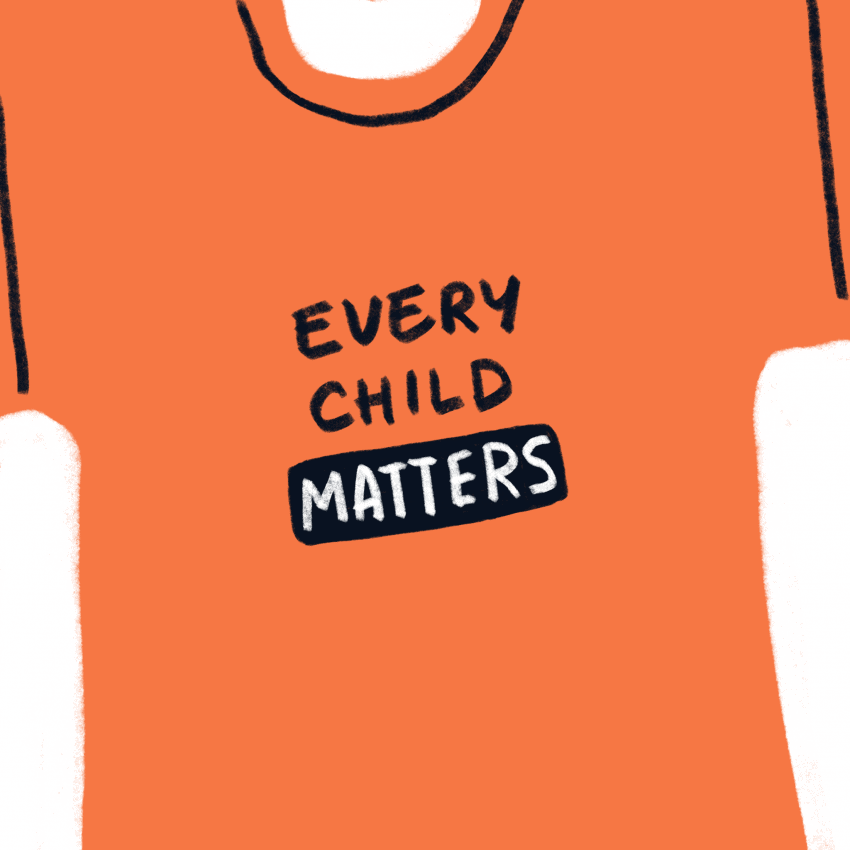
Have you ever wondered why we wear orange shirts on Sept. 30 every year? It is because of the horrific atrocities committed at residential schools across Canada, resulting in continued intergenerational trauma.
Orange Shirt Day began in 2013 in Williams Lake, B.C. This day was chosen because it was the time of year when most children were taken away to residential schools ᠆᠆ it was chosen to honour their memory.
We wear orange because of Phyllis Webstad, a six-year-old student at St. Joseph Mission Residential School. Phyllis’ grandmother gave her a brand new orange shirt for her first day of school so she could feel like she was going to a normal school. But when Phyllis arrived, the nuns took away her clothing including her new shirt.
Residential schools were religious institutions where approximately 150,000 Métis, Inuit and First Nations children between the ages of four and 16 were taken by the government, starting in the 1870s and ending in the 1990s. These children were forcibly removed from their families for long periods of time, and thousands did not make it home due to the torture they endured.
Residential schools were created to assimilate Indigenous peoples. A report submitted to the government in 1879 says that “If anything is to be done with the Indian, we must catch him very young”.
“The children must be kept constantly within the circle of civilized conditions,” the report reads.
Duncan Campbell Scott, the deputy minister of Indian affairs in 1920, was recorded saying that he wanted to “get rid of the Indian problem.”
“Our objective is to continue until there is not a single Indian in Canada that has not been absorbed into the body politic and there is no Indian question, and no Indian Department,” Campbell Scott said.
Reading these words is heartbreaking.
These children were forbidden from speaking their languages and were forced to speak English or French, disconnecting them from their culture and traditions.
Many other atrocities occurred in residential schools. When children first arrived their hair was shaved or cut, their clothing was taken from them and they were cleaned from head to toe with toxic chemicals. These children were exposed to racist and derogatory language that demeaned them.
Once the children were in the schools, they were separated from their siblings and did not get to see them often. If children were caught using their own languages, they would have needles inserted in their tongues, their mouth would be washed with soap, or in some cases they would be taken to an electric chair or starved.
The food was generally insufficient for the children. Not only was it sparse, but it was often spoiled. If a child became sick from eating it, they would be forced to eat their own vomit.
Children were scolded in other ways too. This included receiving the leather strap or beatings. Some children were also locked in closets, cages and basements, or they would have their bodies burned with scalding water. Many of the children were also sexually assaulated by nuns or priests and forced to get abortions.
Children were exposed to freezing temperatures without proper clothing, contracting illnesses that were more difficult to manage because of their confined living spaces. Many of the children contracted tuberculosis or typhoid and were not quarantined.
I share these atrocities, in this detail, because it is important to understand the horrors that occured in residential schools. We must learn about residential schools to better understand the long-term effects of children being stolen from their families and culture. We must learn how it goes beyond those who were in the residential school system, impacting their children and grandchildren through intergenerational trauma.
We must learn and understand so we can empathize with survivors and work together to change the future so that these things never happen again.
Oftentimes, we consider the survivors of residential schools to be the elders in our communities. But the last residential school to close was in Saskatchewan in 1996, which shows how young many of the survivors are.
That is why getting involved in Orange Shirt Day matters. Wear an orange shirt every year on Sept. 30. Watch and share Phyliss’ story. Read The Orange Shirt Story by Phyllis Webstad and Brock Nicol.
Orange Shirt Day is an example of some of the many informative days of history we have in Canada. We can use this to further our education of Indigenous peoples and better ourselves and our future.
Hope N.S. Jeffery is a Métis student at the University of Saskatchewan.
—
Hope N.S. Jeffery
Graphic: Anh Phan | Design Editor